Putin plans to stoke conflict in Africa with private militias, ‘weaponising’ the flow of migrants to try and influence European elections
Russia is trying to destabilize Europe and influence elections by driving migrants into the continent using private armies, it is claimed.
Vladimir Putin already exerts influence over some of the main routes used to reach the continent, and now there are fears that Russia will ‘intensify’ its efforts to move migrants to Europe with the arrival of spring.
Using paramilitary forces and private mercenaries, including the infamous Wagner Group, Russia is believed to be fueling violence in already unstable countries such as Burkina Faso, Mali, Sudan, the Central African Republic and Libya – forcing people to leave their fleeing homes and thus refugees to Europe.
The Kremlin has already been accused of trying to create a refugee crisis by sending asylum seekers to the border with Finland, forcing the new NATO member to close its doors to migrants in a bid to stem the tide.
And since 2021, Belarus – Russia’s closest ally – has been accused of directing immigrants from the Middle East and North Africa – who have passed through Russia – to its borders with Poland, Lithuania and Latvia.
A group of asylum seekers arrive at the border in Salla, Northern Finland, in November 2023, amid a migrant crisis caused by Russia
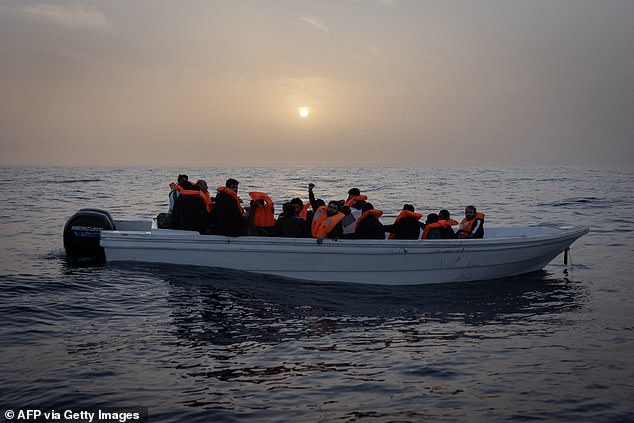
Migrants from Syria and Bangladesh are rescued in a boat off the coast of Libya in January this year
The Telegraph now reports that it has seen intelligence documents detailing Russian plans for agents to set up a “15,000-strong border police force,” made up of former militias in Libya, to funnel migrants into Europe.
The plans fell through as payments through the ‘Russian-Libyan Cultural Institute’ in Moscow never materialised, although this is thought to be a foretaste of what could happen.
This is accompanied by warnings that Putin is trying to influence the politics of countries in the West, using some African countries as staging areas for migrants.
EU border police have said Russia is using migration “as leverage in a larger game of influence and pressure” on its opponents in the Wast.
This would be of great benefit to Putin and Russia as the country continues to wage war in Ukraine, which is currently supported by its allies in Europe and the US.
However, with the EU elections in June, the European Parliament is predicted to tilt to the right, with migration already proving to be a key issue for voters.
This in turn is expected to lead to an increase in the number of MEPs less sympathetic to Ukraine’s plight – and more sympathetic to Putin – to take seats in the European Parliament, boosting support for Kiev in its defense against Russia decreases.
It is predicted that if Russia had its way, many migrants would attempt to cross the Mediterranean by boat to southern Europe before being helped to other countries by people smugglers.
Russia already has thousands of mercenaries fighting in the ongoing Libyan civil war and is said to be deeply involved in smuggling rings.
A security source told the publication: ‘If you can control the migrant routes to Europe, you can effectively control the elections because you can restrict or flood a certain area with migrants to influence public opinion at a crucial time.’
There are concerns that migrants who entered Europe on Putin’s orders in winter may attempt to cross the English Channel in summer, when conditions are more favorable.
Frontex, the EU’s border police agency, said there were 380,000 irregular border crossings in 2023, the highest number since 2016. Of these, more than 62,000 were trying to enter Britain, it added.
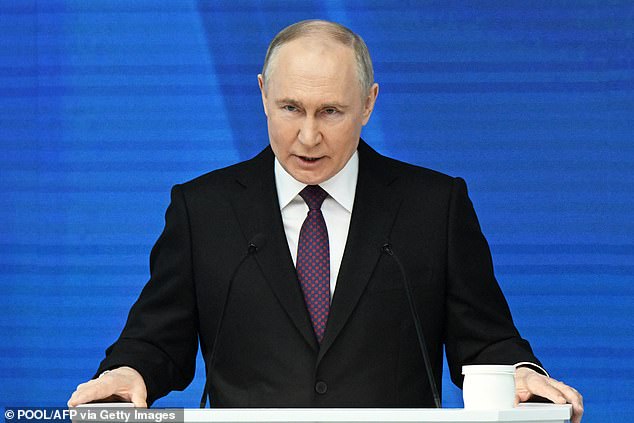
Vladimir Putin has been accused of fueling the migrant crisis to influence politics in Europe. Pictured: Putin delivers his annual State of the Nation address in Moscow on Thursday
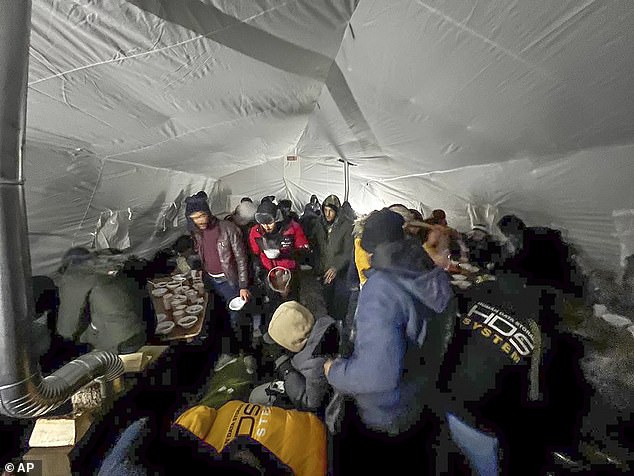
Migrants gathered in a tent to get hot drinks near the border with Finland at the Salla checkpoint in November last year
It has previously warned that “the likelihood of the instrumentalization of migrants by Russia and Belarus has increased.”
Last year, Finland was forced to close the doors to asylum seekers at four border crossings after alleging that Putin had deliberately sent them across in retaliation for joining NATO.
Prime Minister Petteri Orpo said it is “clear that these people are being helped and that they are also being escorted by border guards or transported to the border,” although Russia rejects the claims.
Many of the migrants who arrived at the Finnish border did so without proper documentation or identification, and many came from Africa and the Middle East.
A senior academic claimed that Russia’s involvement in Africa could trigger further waves of migration.
Dr. Sergey Sukhankin, senior fellow at The Jamestown Foundation and consultant at Gulf State Analytics in Washington, told the Telegraph: ‘The various waves of illegal migrants from Africa could increase as Russia plans to create a new military facility in the Central African country. African Republic.’
The Central African Republic is a key part of some of the most heavily used migrant routes, through which asylum seekers from places such as the Democratic Republic of Congo pass on their way north to Sudan and Libya.
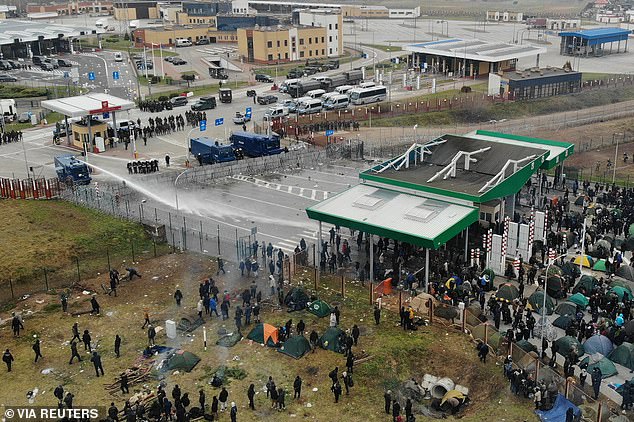
2021: Polish police fire a water cannon at migrants camping at the Belarusian-Polish border near Bruzgi. Belarus – Russia’s close ally – pushed migrants from the Middle East and North Africa towards the borders with Poland, Latvia and Lithuania in 2021
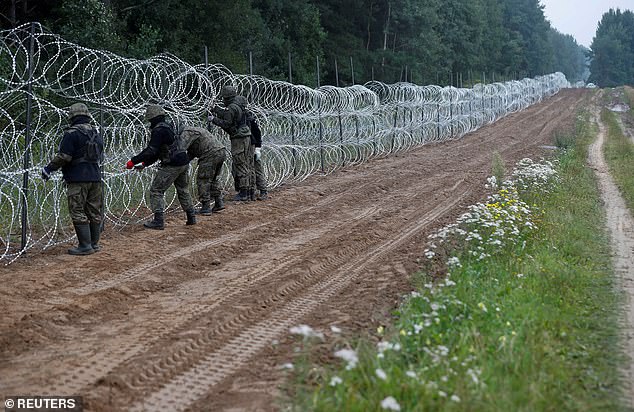
Polish soldiers are seen building a fence on the border between Poland and Belarus near the village of Nomiki, Poland, August 26, 2021
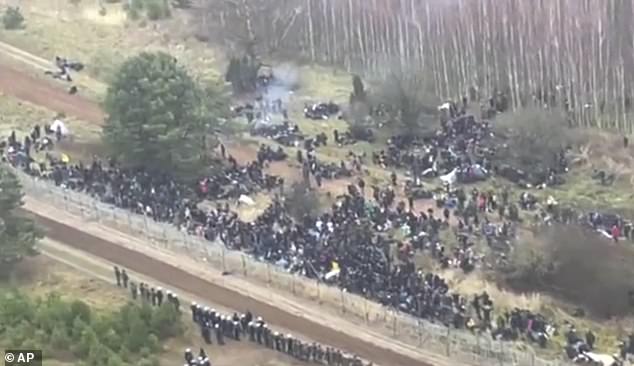
This image, taken from a video from the Polish Ministry of Defense, shows an aerial view of migrants and security personnel gathered at the border Kuznica, Poland, November 8, 2021
A Frontex spokesperson told the Telegraph: ‘These developments illustrate wider strategies that appear to be being used by state actors such as Russia and Belarus, aimed at stress-testing the resilience of borders shared with EU and Schengen countries.
‘This is not just a matter of border security, but also of geopolitical tension, with migration being used as leverage in a larger game of influence and pressure. It is disturbing to see how the desperation of people wanting to come to the EU is ruthlessly used as pawns in a geopolitical game.
‘While these incidents in Finland are currently occurring on a relatively limited scale, they indicate a potential risk that could increase, especially with the arrival of spring – a period traditionally associated with increased migration movements.
“The situation could escalate further if there is active facilitation of the crossing by the authorities concerned.”
